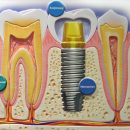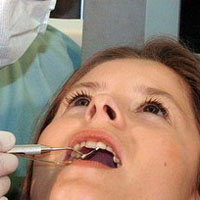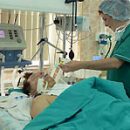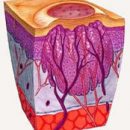What is bilirubin
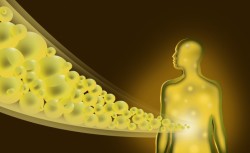
Bilirubin is a bile component that is present in the organism of people and animals. This pigment is the result of the collapse of certain proteins, which include hemoglobin, cytochrome and myoglobin. Splitting in the bone marrow, liver, spleen and lymph nodes, the hem-containing blood components fall into bile and are outlined with it from the body.
A small amount of bilirubin in the blood is always present, but sometimes the level of this substance exceeds the norm, which often indicates the availability of health problems. To determine the level of bilirubin, you need to do Biochemical analysis, for which venous blood is used.
The blood test allows you to identify not only the number of bilirubin, but also its type:
- Related bilirubin is a low-toxic part of the total bilirubin. It is formed in the liver, is a water-soluble substance and is quickly excreted from the body.
- Unrelated bilirubin appears due to the destruction of red blood cells. This gall component does not dissolve in water and has high toxicity. Finding into the cells of the body, unrelated bilirubin violates their normal functioning.
- Common bilirubin is a concept that the total level of content of both pigment fractions are denoted by.
The normal number of bilirubin in the men's body ranges from 3.5-25 μmol / l, for women, this figure is 5-19 μmol / l. As can be seen, in women, the content of bilirubin is lower than that of representatives of the power. The reason is that the blood of women has fewer erythrocytes, which is due to physiology.
Symptoms of raising bilirin
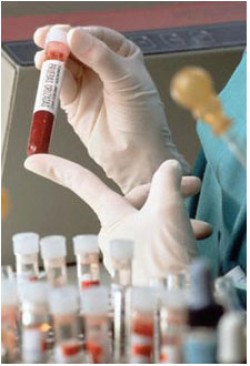
Changing normal indicators of the content of gall pigment may be a sign of any disease. Our site reviewed cases in which an increase in the indirect bilirubin in the blood is observed:
- Excess decay of red blood taurus testifies to the presence of hemolytic anemia or a certain infectious disease, for example, malaria.
- The increase in the spleen also affects the level of unrelated bilirubin. The spleen is enlarged for various reasons, for example, due to infections, autoimmune diseases, leukemia.
- The amount of indirect gall pigment rises with the intricacies of the body.
- Hemolysis in newborns, resulting from the reserves-conflict with the blood of the mother - one more of the reasons for bad biochemical analysis.
- The incompatibility of donor blood with the blood of the recipient also causes an increase in the level of unrelated bilirubin.
If biochemical analysis revealed a direct bilirubin, this may indicate such problems:
- Gallgamed disease.
- Inflammation of bile ducts as a result of hitting bacterial infection.
- Obstruction or complete absence of biliary tract. This rare disease is a congenital anomaly.
- Chronic pancreas inflammation.
- Oncological formations in the bustling bubble, ducts, pancreas.
- The presence of Karoli syndrome.
Finding the level of general bilirubin in the blood test, doctors may assume the presence of one of the following diseases:
- Hepatitis A viral, drug, chemical nature.
- Disorders in the work of the liver due to infections.
- Zirroz, Oncological diseases of the liver.
- Fat rebirth of hepatic cells as a result of alcohol or other toxic substances.
- Enzyme violations caused by genetic factors.
There are cases when the increase in bilirubin is considered a normal phenomenon. So, the amount of pigment exceeds the norm in newborn children. During the first month of life, Bilirubin comes to normal, and jaundice disappears by itself. Some pregnant women have a similar phenomenon in the last periods. To prevent the possibility of the development of dangerous diseases, women are recommended to regularly donate blood for analysis.
Ways to eliminate the problem
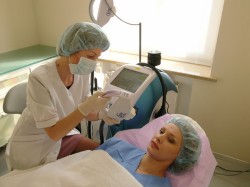
To normalize the production of bilirubin, it is important to identify the exact cause of pathology and treat it precisely. If the prerequisites for rising pigment are stones in bile ducts, they should be removed surgically or by receiving special medicines. Hepatitis should be treated with antiviral means, passing drugs to restore the functions of the liver.
Symptomatic treatment of elevated bilirubin is infusional therapy, which implies the infusion of glucose into the blood with the simultaneous use of disinfectants. Such therapy makes it possible to cope with the severe effects of the body poisoning to toxins.
Phototherapy - another way to facilitate the condition of the patient. In the process of such treatment, a person is irradiated with special lamps, as a result of which unrelated pigment acquires a direct form and is derived from the body.
Our site found out that the basis of effective treatment of elevated bilirubin is considered correctly selected diet. The principles of it are:
- The patient must be removed from its diet fried and oily food, smoked and pickles, sweets, and all that saturated with spices. You can not drink alcohol and carbonated drinks, as well as any food containing artificial dyes, flavors, preservatives.
- Better food for the patient is considered vegetables, and there are fresh, boiled, baked, baked, steady, boiled, baked.
- Freight of nutrition - one of the principles of such a diet. It is better to eat food more often, but portions do small. So that the stomach has better coped with food, it can be chopped in a blender.
It is impossible to completely eliminate the problem with a diet, but the correct nutrition will speed up recovery and contributes to the rapid improvement of well-being. Medical therapy will not be effective without diet.
In the process of treatment, you can resort to the means of traditional medicine, for example, to prepare a decoction of mint, mother-in-law, chamomile and a hunter. Such infusion should be taken twice a day before meals.
An important condition for successful treatment is the elimination of stress and irritant factors. Nervous tension, emotional experiences negatively reflected on the work of the liver and lead to an increase in the amount of bilirubin in the blood.

